When finalizing my travel plans for Uzbekistan, Khiva appeared only a place to go “if I could manage time,” because it seemed so far away from every place I meant to visit. So, I let it remain on my list as a backup if or when fancy took me. Khiva was like that secret I would open only if I had no choice.
Truth be told – while it was on Samarkand and Bukhara that I had pinned my hopes for the Uzbekistan Silk Road trip – it was Khiva that stole my heart in the end.
I was surprised to find that Khiva, an important stop on the Silk Road was not as “far away or isolated” as some sources made it out to be and I am glad that I took the chance to visit this off the beaten track place in the south -central part of Uzbekistan.

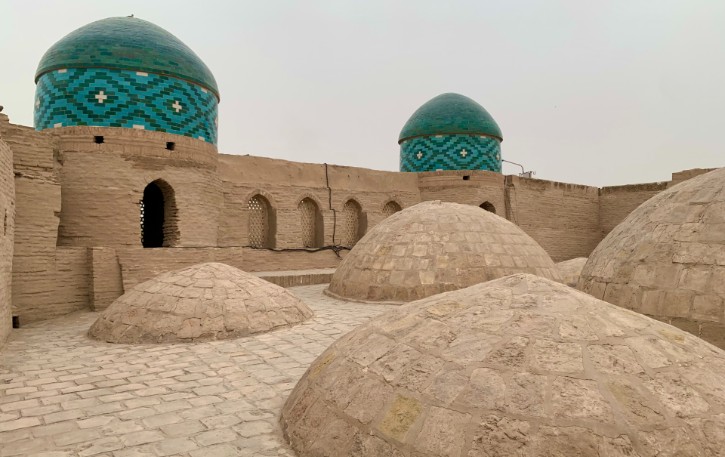
An introduction to Khiva
Khiva was synonymous with slave trade and barbarism once upon a time (slavery was formally abolished in 1917). That tag is long gone and today it is more like an open-air museum, to say the least. Its mud-walled, labyrinthine alleyways are charming and the intricate designs of blue mosaic are perhaps one of its kind and very pleasing to the eye.
Khiva was established over 1,500 years ago. Through the centuries, it was destroyed and rebuilt several times. Much of the restoration works were carried on by the Soviets making it into what it is today. It was listed as a UNESCO World Heritage site in 1991.
Khiva explained in two steps
When I finally decided to visit Khiva, it was the mud walls that sealed that decision. When I finally arrived (on a seven-hour train journey from Bukhara), the walls took my breath away. The foundations of Khiva’s mud walls were laid in the 10th century and were razed and rebuilt many times throughout history. The current wall was built in the 17th century and is 10 meters in height. Khiva covers an area of about three kilometres and is filled with madrasa, mosques, tiled minarets and surrounded by huge ancient mud walls.
- Khiva is split into the old town, Ichan Kala (or Itchan Kala) inner city) which is surrounded by the ancient mud walls and the Dichan-Kala, which is the area outside the walls. Entry into Ichan Kala is through four gates, with the West Gate being the main entrance. There are about 60 architectural attractions within this old city.
- The Ichan Kala covers about 26 hectares and it has all the main attractions of Khiva (ticket required for most). The 2-day ticket costs about USD 15 and it covers all the museums and buildings in the Ichan Kala. Climbing the minarets and watchtowers are additional.
What you must know about Khiva
Entry into most of the places require a ticket but thankfully there is a single ticket, sold at the west gate, that can be used to gain access to most of the city’s tourist sights and is valid for two days. The ticket costs 51,000 som ($6.30) per person, plus a 15,000 som ($1.90) camera fee. Attractions requiring extra payment tend to have a small cashier desk at the entrance. If you are staying inside the Khiva Fort (use the South Gate) then of course, it is another story.
Must do things in Khiva
At the gates of Ichan Kala you will find tacky souvenir stands that might seem a little off-putting but plunge through nevertheless because it is where the true tourist treasure lies.
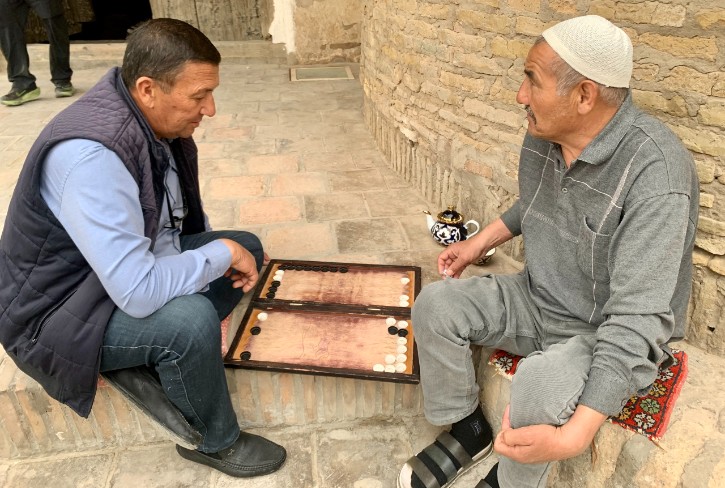
Get awed by the Kalta-Minar
This ‘low tower’ near the West gate was erected in the 19th century by Amin Khan. This minaret is unique because it was not completed – but it is impossible to imagine Khiva without this tower. Covered in blue and green glazed tiles, it is not without its share of legends and myths, the most popular being that when Bukhara khan heard about the construction of Kalta Minar, he asked his architect to build the same building for him. But when Amin Khan heard of this plot, the architect was thrown off the minaret.
Now you can find this article as part of GPSmyCity app
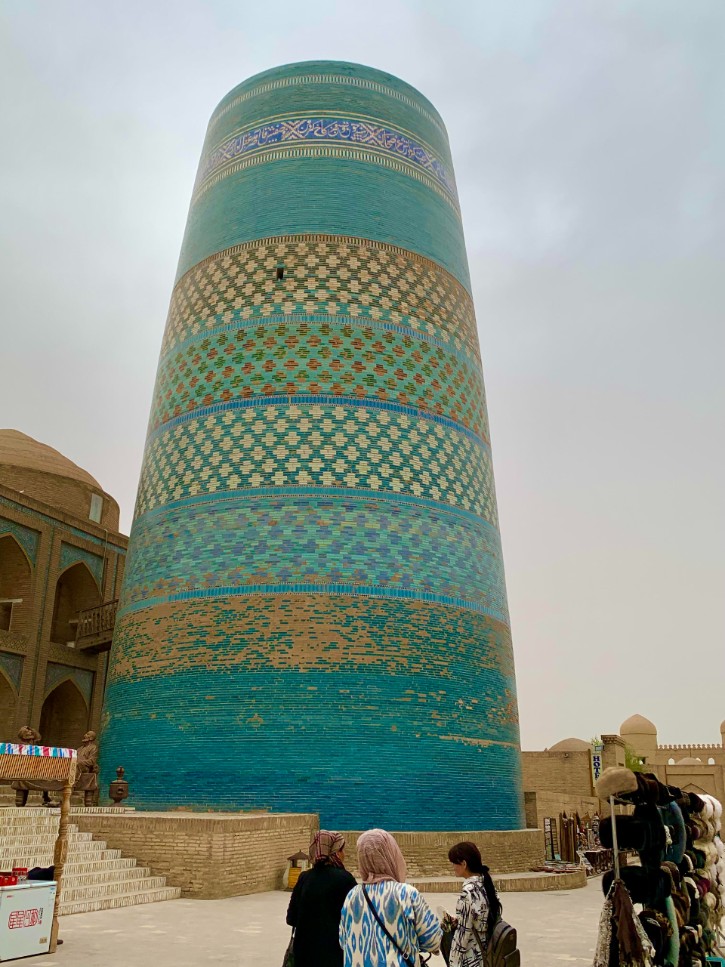
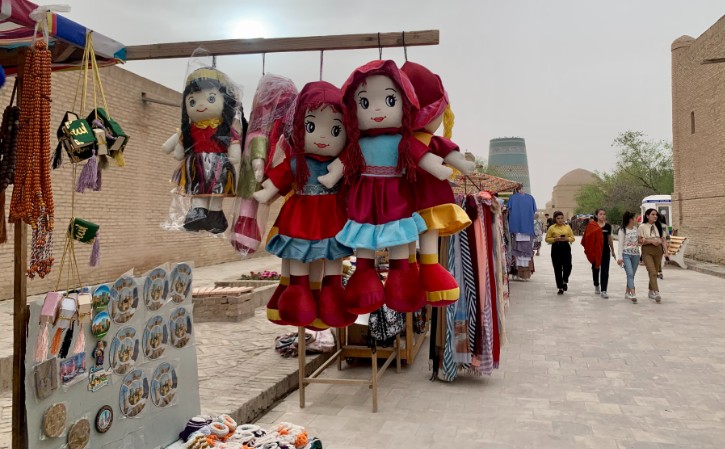
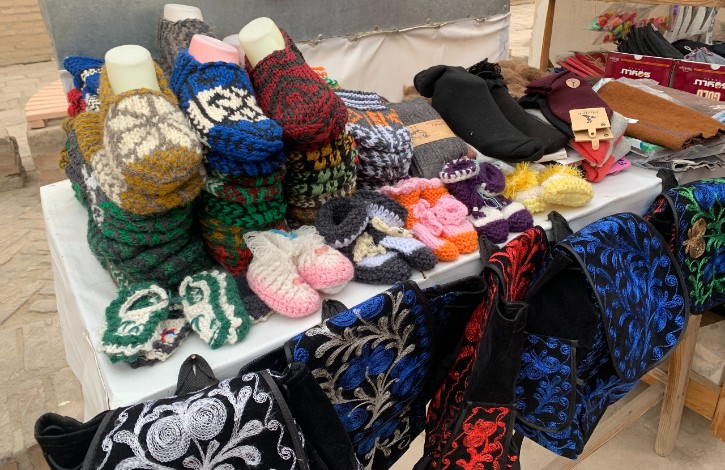
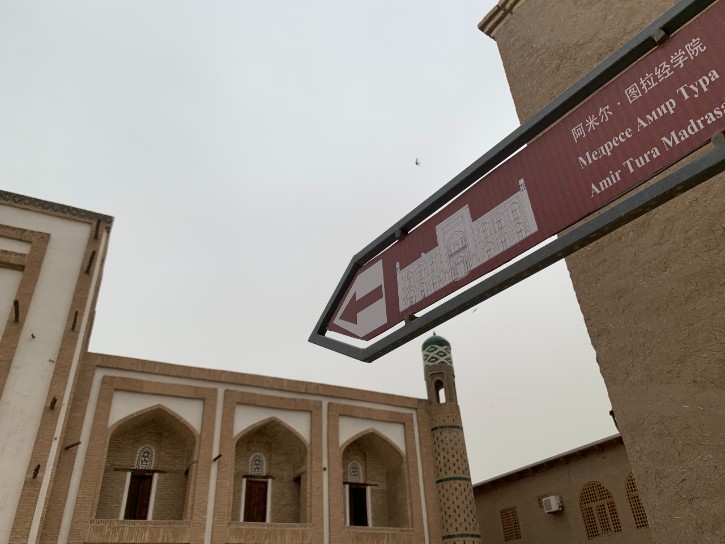
Pahlavon Mahmoud Mausoleum
Every inch of this space is adorned with blue tiles. The sacred site which sits below the turquoise dome that dominates Khiva’s skyline, houses the tomb of Pahlavon Mahmoud, Khiva’s patron saint among other accolades.
Remember to be respectful when exploring. Remove shoes before entering.
***Ticketed entry. Not included in the city-wide ticket.
Djuma Mosque
Two hundred and fifteen columns hold up a flat roof and some of these wooden columns dates to the 10th century (the mosque, also known as the Friday Mosque was built in the 18th century). Silence is advised here for obvious reasons although it is a very popular spot for tourists. Your moment of silence or solitude may be long coming, but don’t lose hope yet.
***Included with the city-wide ticket.
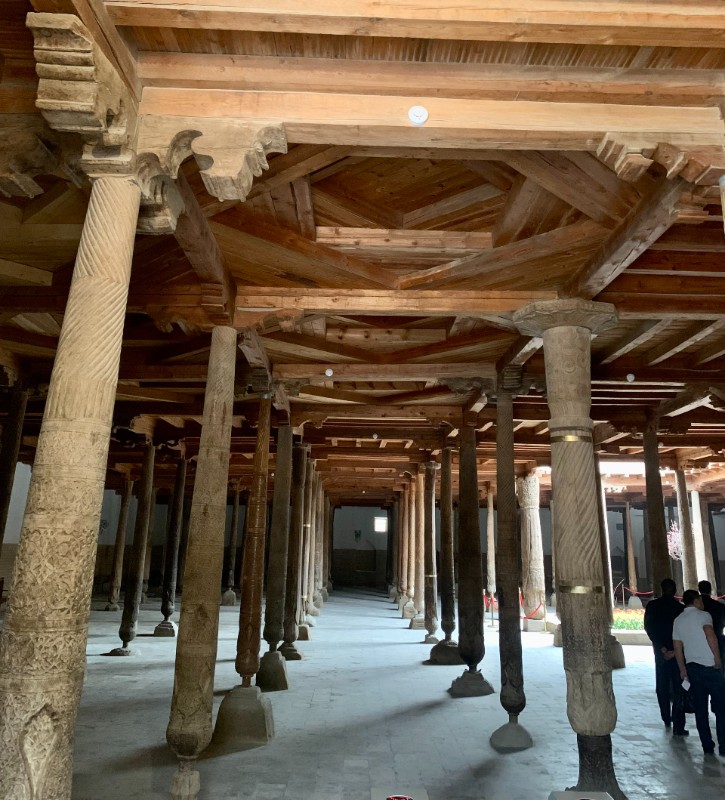
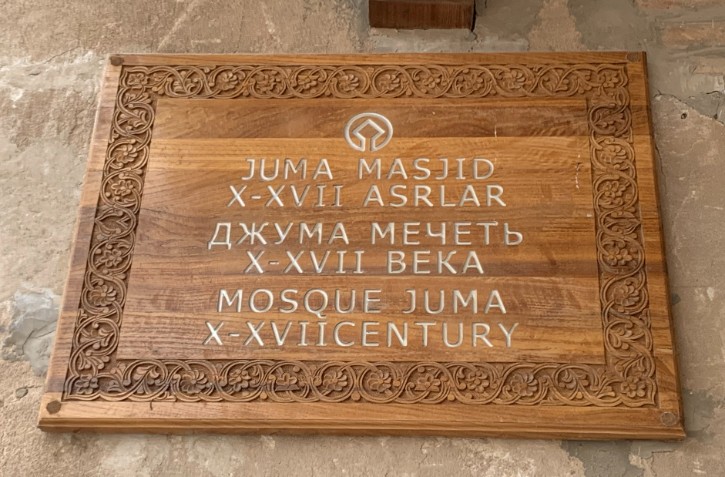
Watch the sun go down from the watchtower
You can access the watchtower through the Kuhna Ark. From above you get the perfect view of the sunset. This is a popular spot for tourists, so arrive early to secure your best spot.
***Entry to Kuhna Ark is included in the city-wide ticket but access to the Watchtower is an additional 7,000 som ($0.80).
Loose yourself in the backstreets
Make no mistake – Khiva is packed tight and you might even miss an attraction or two, but remember there is more to the place than architectural monuments. Loose yourself I the alleyways or engage in small talks with ramdon strangers – here you will often find locals walking up to you with a question or four.
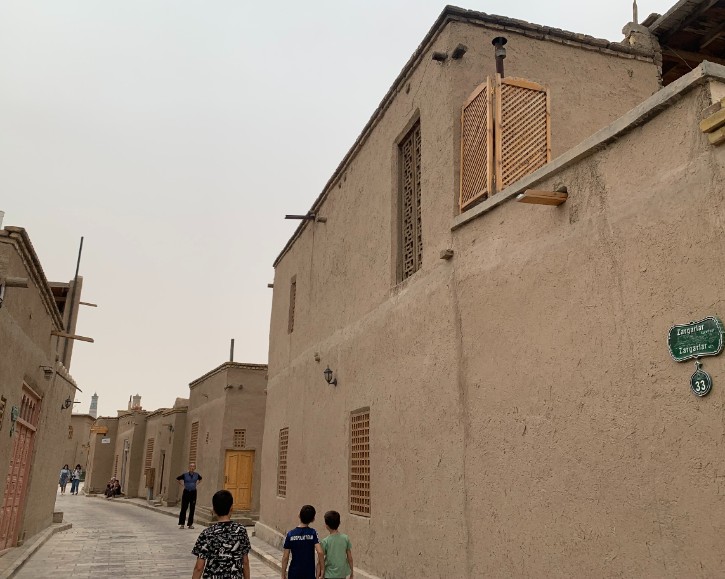
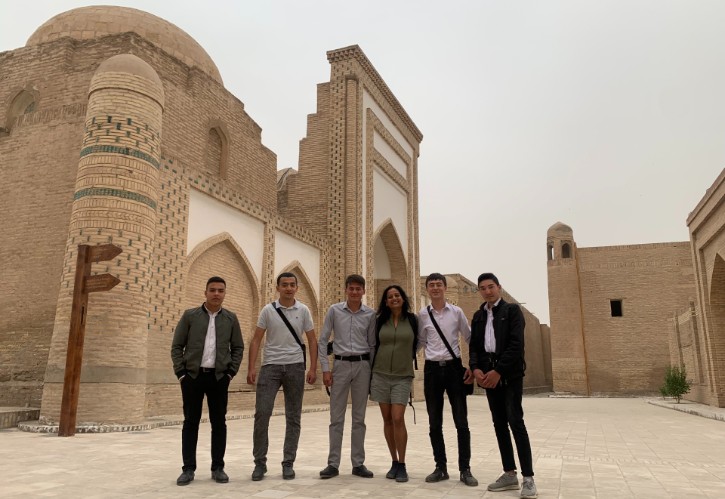
Admire the view from Islom Hoja minaret
The tallest minaret in Uzbekistan and equally beautiful, then Islom Khoja is just the place to be. Of course, getting to the very top requires some push – but worth the climb. At the base of this tower is the museum.
***Museum is included in the city-wide ticket. Climbing the minaret is an additional 7,000 som ($0.80).
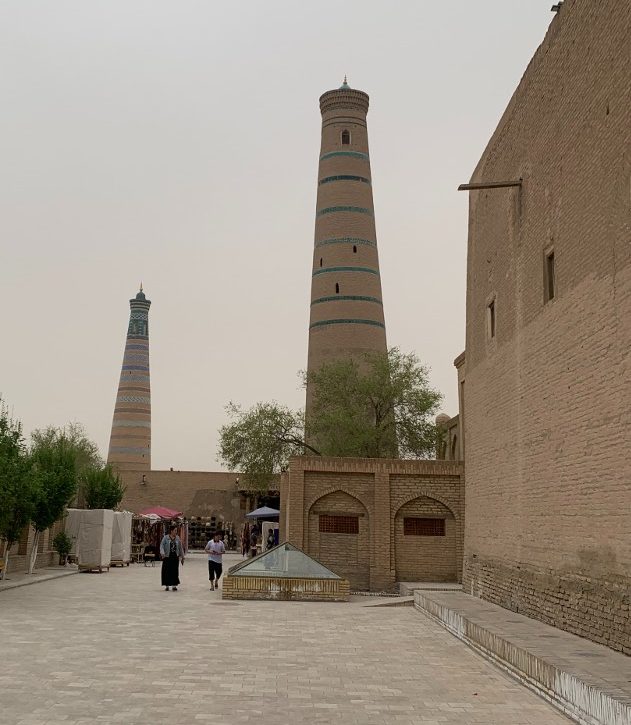
Walk along the Old City walls
For the best view of the city, take a stroll on the walls surrounding the Old City, starting from the northern gate and walk on till you reach a dead end at the Kunya Ark citadel. To return, you’ll have to retrace your steps.
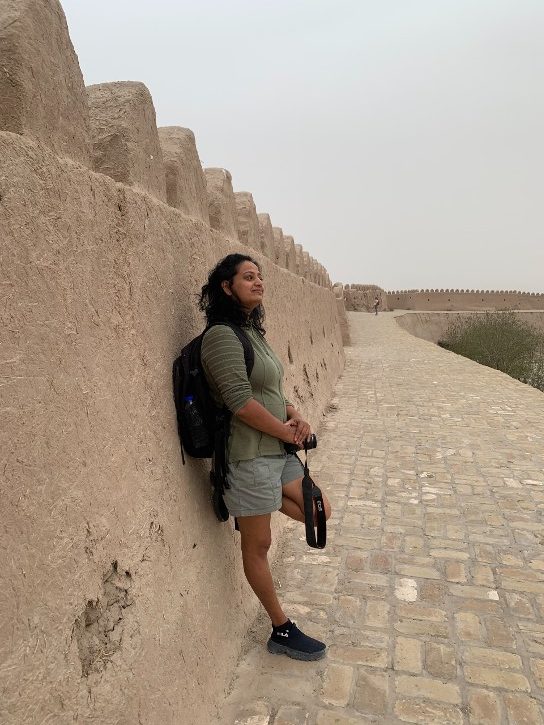
The Bazaar Experience
So, Khiva is not all touristy architectural monuments – this is found out outside the city walls. I really liked the bazaars in Khiva (yes, there is more than one, but I am referring to the open market near to the Old City). It was here I loaded up on some chili, cucumber, dill, spring onions and such like to go with the meals at the restaurants – you know, just to spice things up! No one really minded that much.
The bazaars are lively and filled with everything good – clothes to vegetables and meat. Follow your nose to the small restaurants tucked away behind the pile of clothes and enjoy some delicious “kebabs” smoking away on the grill.
Price: Free!
What to eat
Well, Khiva is not entirely known for its food and the cuisine is not very different from the rest of the country, but it does have its own special food and taste, if you know where to look.
Khiva’s signature dish, shivit oshi, a pasta infused with dill and topped with a vegetable (or meat) stew.
Oven baked somsa is another must- try dish whilst here. So is the ubiquitous plov (although with far less raisins in it, which is perfect)
But I’d suggest getting out of your fortress (literally) and heading into town, admittedly the market, to try some of the more local delicacies at half the cost
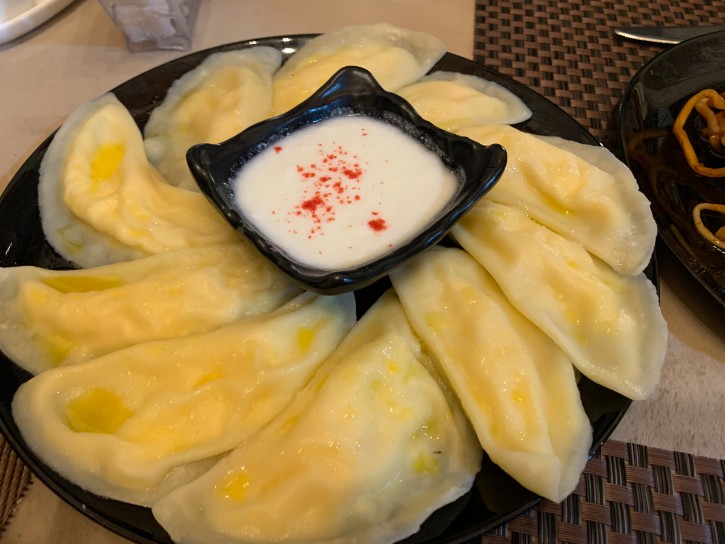
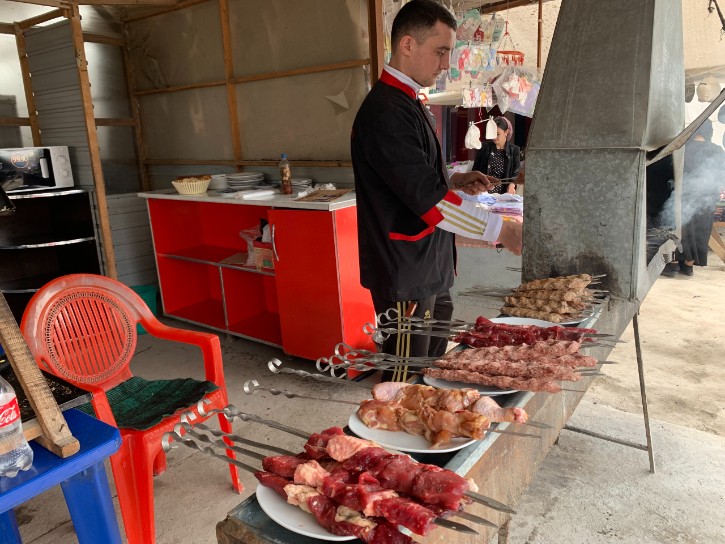
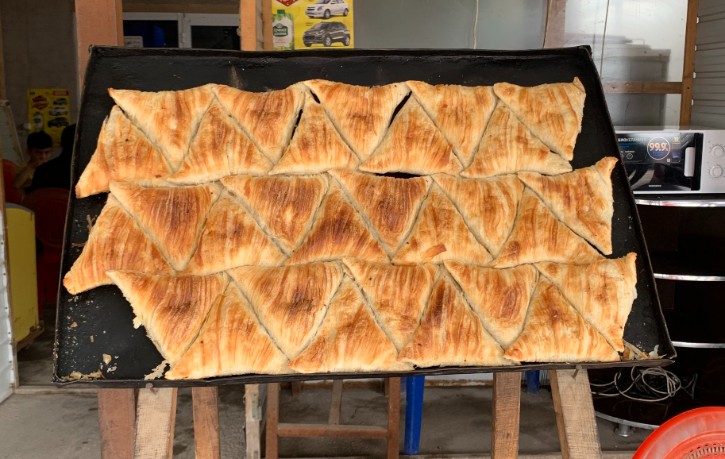
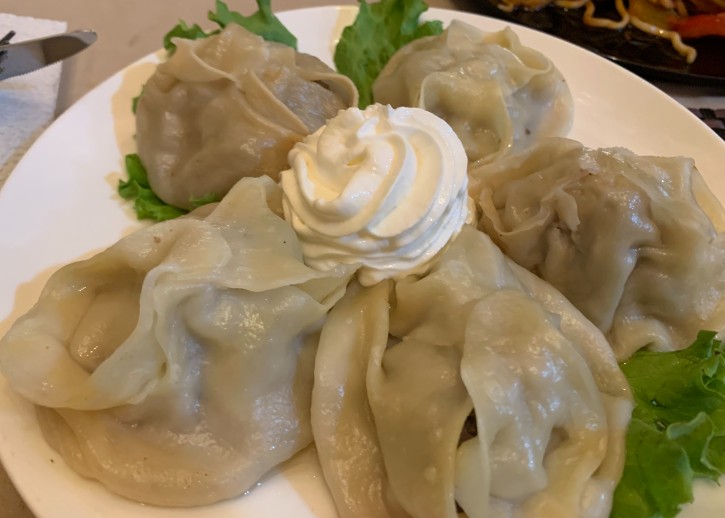
*** One of the places I frequented was the Terassa – for its food (a bit pricey though) and the views of the West Gate.
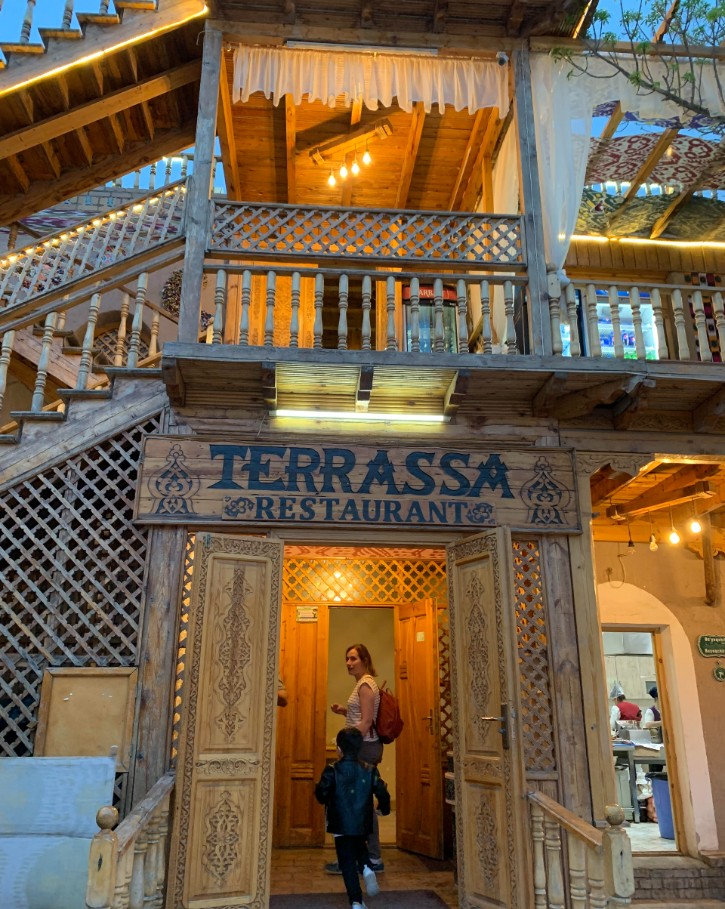
How to get to Khiva
Khiva is somewhat inconveniently located thus discouraging tourists from visiting it altogether. But this pocket-sized city is so enchanting that one could overlook that inconvenience and plan carefully.
Trains: Bukhara, Samarkhand and Tashkent are connected by train. However, there are very few trains leaving Khiva for other cities, so it is advisable to book in advance and check for your transport options.
If you must get on the train, then you can easily catch a shared taxi to Urgench (also the airport) or go directly to Bukhara. From here, you can catch trains far more easily.
The train timetable can be accessed here. However, the train is only in operation in high season.
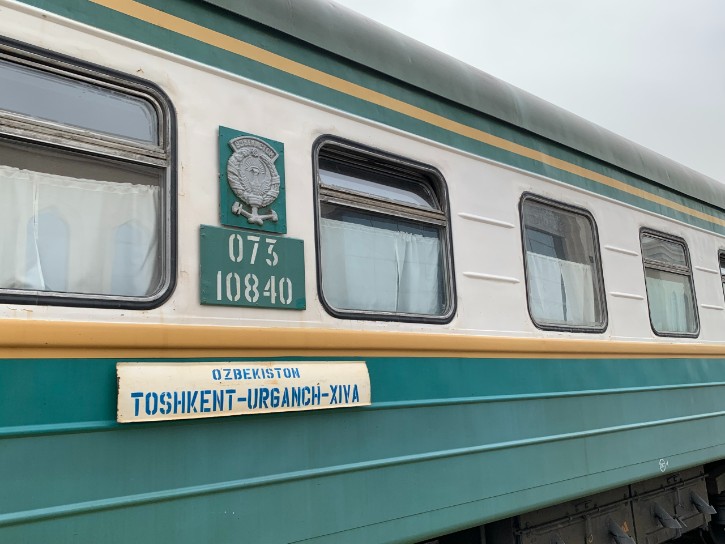
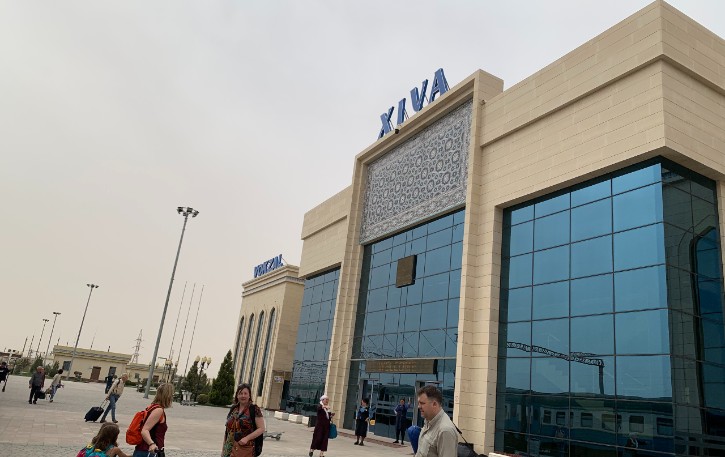
Shared taxi
To get to Urgench, the quickest way is to catch a shared taxi. Urgench is 35km from Khiva and shared taxi can cost around 10 USD. The drive to Bukhara takes about 8 hours (including breaks).
Flights: Urgench is the nearest airport to Khiva and flights are available to Tashkent at a nominal cost.

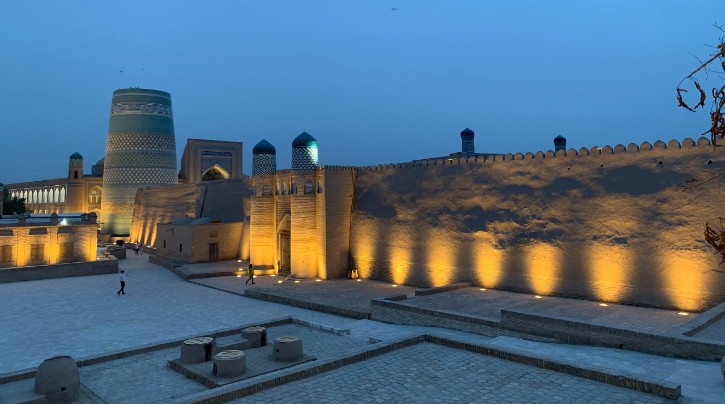

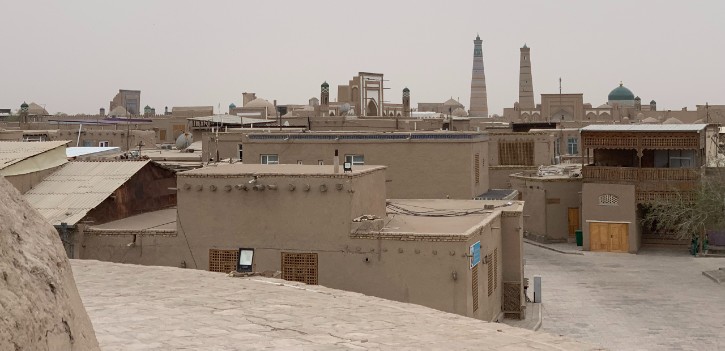
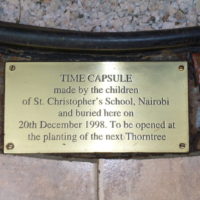
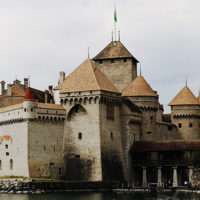
How did I miss this website all these days? Good one babes. Will travel with you to all other parts of the globe. To day was Khiva and it was quaint…
The article on Khiva is excellent. .Didn’t realize for a small place like the inner city, there is so much details until i was reading the article. .
Khiva definitely was a surprise for me as well – so much history packed in one small place! in fact, nearby places are fascinating too, like that Ship Cemetery in Aral Sea. A surprising find it turned out to be
What a wonderful post written on Khiva, Uzbekistan. The Alta Minar looks so exquisite standing tall as the tallest tower in Asia. The sandstone architecture is a treasure trove of these central Asian cities. Just like Bukhara and Samarkand, Khiva is a place worth a visit.
What an inspiring post! Now I want to visit Khiva. Love the fort walls. The roof reminds me of Kashan houses in Iran.
Oh yes! The wave like pattern on the outer walls are a sight to behold. I am glad I took that chance to visit – and was pleasantly surprised with the place too. So little is known about it but so worth the visit.
Currently in Khiva. The 2 day pass is really only a 24hr pass and was charged 200,000 som (50,000 photography fee).
The watchtower is 100,000 som entry
Hi
V nice detailed article on khiva.
I need a tour guide in khiva . Can u pl. help me.